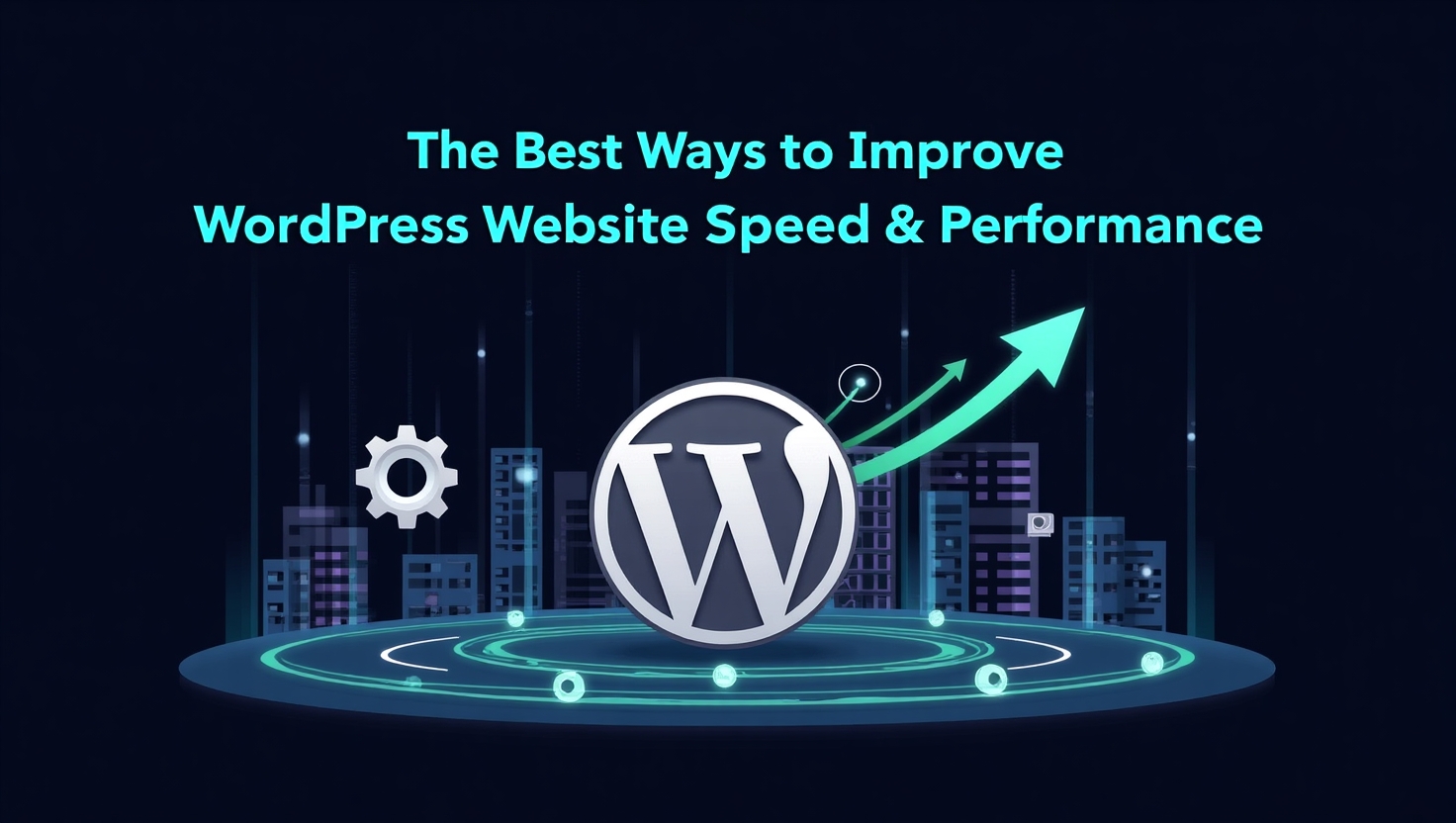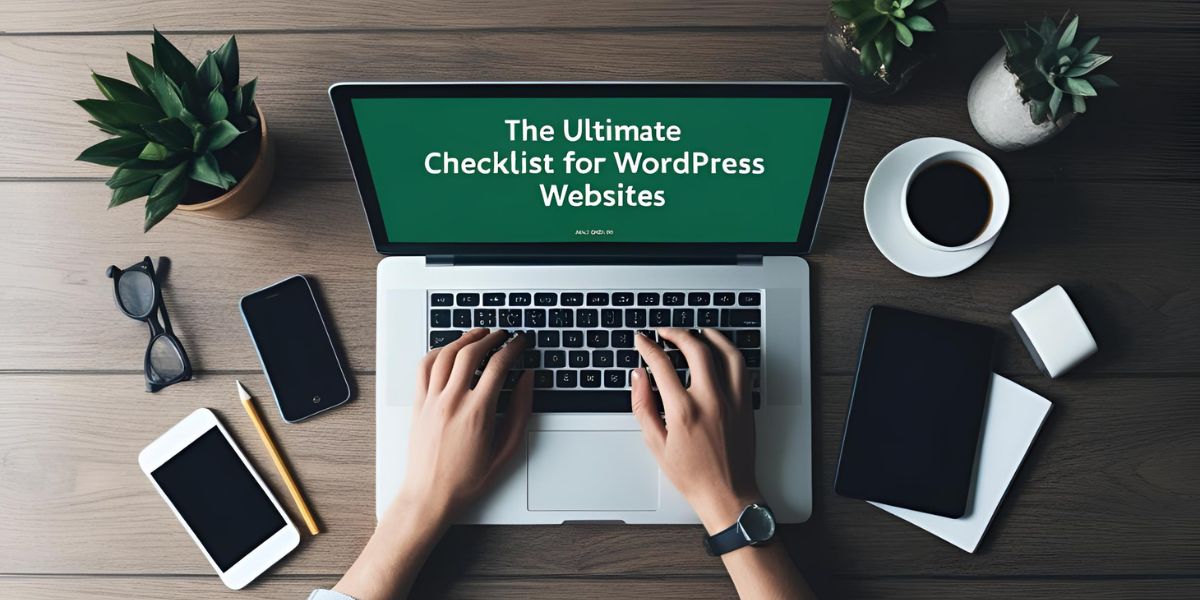Introduction
Why Website Speed Matters for User Experience and SEO
Speed is more than a technical metric—it’s a user expectation. A site that lags even by a few seconds can result in higher bounce rates, decreased conversions, and ultimately, lost revenue. From a search engine perspective, speed is a direct ranking factor according to Google. In today’s digital ecosystem, milliseconds matter.
The Role of WordPress in Modern Web Development
Powering over 40% of the web, WordPress remains the cornerstone of modern content publishing. Its flexibility, extensibility, and large ecosystem make it a favorite for developers and non-tech-savvy users alike.
Understanding the Foundations of WordPress Speed
How WordPress Works: Themes, Plugins, and the Database
WordPress relies on PHP scripts that dynamically pull content from its MySQL database. Themes dictate design, plugins extend functionality, and both rely heavily on database queries.
Common Bottlenecks That Slow Down WordPress Sites
Excessive HTTP requests, unoptimized images, bloated code, and slow server responses are common performance bottlenecks. Tools like GTmetrix and PageSpeed Insights help identify them.
Choosing the Right Hosting for a Fast WordPress Website
Shared vs. Managed vs. VPS Hosting: Which One is Best for Speed?
Shared hosting is economical but crowded. VPS hosting provides dedicated virtual space. Managed WordPress hosting is tailored for performance and ease.
Key Hosting Features That Impact WordPress Performance
Look for SSD storage, latest PHP versions, NGINX or LiteSpeed servers, and HTTP/2 support.
Recommended Hosting Providers for High-Speed WordPress Sites
Selecting a Lightweight and Speed-Optimized Theme
Characteristics of Fast WordPress Themes
Minimalist code, mobile responsiveness, and low external dependency are key. These characteristics improve performance out of the box.
Top Lightweight Themes Known for Speed and Performance
Avoiding Feature-Bloated Themes That Slow Down Load Time
Avoid themes bundled with page builders and heavy scripts. Rely on plugins for extended features when needed.
Optimizing Images Without Sacrificing Quality
Best Image Formats for Web Performance
Use JPEG, PNG, and SVG wisely. For advanced performance, adopt WebP or AVIF.
Compression Tools and Plugins to Reduce Image Size
How to Implement Lazy Loading for Faster Initial Page Loads
Use the native WordPress lazy loading or plugins like a3 Lazy Load.
Minimizing Plugin Overload
How Too Many Plugins Can Affect Website Speed
Each plugin introduces scripts and queries. Redundant or poorly coded plugins significantly degrade performance.
Tips for Selecting High-Performance Plugins
Choose plugins that are highly rated, frequently updated, and well-supported in the WordPress plugin repository.
Essential Plugins for Speed Optimization
Using Caching for Maximum Speed Gains
What Is Caching and Why It’s Crucial for Speed
Caching stores a static version of your site for faster delivery. Learn more on WordPress Caching.
Types of Caching: Page, Browser, Object, and CDN
Understand differences in caching types via Cloudflare’s documentation.
Best WordPress Caching Plugins and How to Configure Them
Implementing a Content Delivery Network (CDN)
How CDNs Work to Speed Up WordPress Sites
CDNs distribute static files geographically. More info: What is a CDN?

Setting Up a CDN Step-by-Step
Follow this guide for Cloudflare setup on WordPress.
Optimizing CSS, JavaScript, and HTML
Minification and Concatenation Explained
Learn about minification and why it’s essential for reducing page size.
Tools and Plugins to Automate Code Optimization
How to Defer JavaScript and Remove Unused CSS
Use Flying Scripts or WP Rocket’s built-in defer options.
Database Optimization for Faster Performance
Why a Clean Database Matters
Post revisions, spam, and expired transients can bloat the database. A lean database ensures faster queries and reduced TTFB.
How to Optimize Your WordPress Database Manually
Learn to use phpMyAdmin and WP-CLI.
Recommended Database Optimization Plugins
Improving Server Response Time
Diagnosing Slow TTFB (Time to First Byte)
Use tools like WebPageTest and Pingdom to evaluate TTFB.
Server-Level Tweaks to Improve Load Speed
Enable OPcache, FastCGI, and use server-level caching on NGINX or LiteSpeed.
Using GZIP Compression and Keep-Alive
Enable GZIP compression and Keep-Alive via your .htaccess or hosting control panel.
Enabling HTTP/2 and HTTPS for Better Performance
Benefits of HTTP/2 for WordPress Sites
HTTP/2 supports multiplexing, header compression, and prioritization. Read Cloudflare’s guide.
How SSL and HTTPS Impact Speed and Security
Use Let’s Encrypt to secure your site with SSL and pair it with HTTP/2 for better speed and trust signals.
Mobile Optimization Best Practices
Why Mobile Speed Matters More Than Ever
Google’s mobile-first indexing prioritizes mobile performance in rankings.
Responsive Design and AMP for WordPress
Use responsive themes and consider AMP for streamlined mobile experiences.
Mobile-Specific Speed Optimization Techniques
Remove unnecessary mobile scripts, resize mobile images, and use mobile speed testing tools.
Using Performance Monitoring Tools
Tools to Analyze Your Website’s Speed and Core Web Vitals
Understanding Speed Metrics Like LCP, FID, and CLS
Learn how Core Web Vitals affect real-world UX and performance.
Interpreting Reports and Taking Action
Identify and resolve render-blocking issues, font loading delays, and layout shifts from diagnostic suggestions.
Implementing Lazy Loading for More Than Just Images
Lazy Load Videos, iFrames, and Other Elements
Use plugins or native lazy loading for iframes and media embeds.
WordPress Plugins That Support Full Lazy Loading
Controlling External Scripts and Third-Party Resources
How Third-Party Scripts Slow Down Your Site
Track how scripts affect performance using Chrome DevTools.
Managing Fonts, Ads, Analytics, and Social Embeds
Self-host fonts and load analytics like Google Analytics via gtag.js asynchronously.
Strategies to Reduce External Request Impact
Use Perfmatters or Asset CleanUp to manage scripts on a per-page basis.
Reducing HTTP Requests and Server Calls
Techniques to Minimize External Resources
Implement CSS sprites and inline SVGs to reduce the number of resource fetches.
Combining Files and Inline Styles for Better Performance
Use critical CSS tools or WP Rocket’s “Optimize CSS Delivery” feature.
Utilizing Modern Web Technologies and Standards
Leveraging WebP, Brotli, and AVIF for Performance Gains
Check out Brotli compression and next-gen image formats like AVIF.
Staying Updated with WordPress Performance Enhancements
Track WordPress release notes and performance plugin initiatives.
Maintaining Speed Over Time
How to Schedule Regular Performance Audits
Set monthly checks using Lighthouse CI or web performance APIs.
Keeping WordPress, Plugins, and Themes Updated
Use WP-CLI or managed hosting automation to streamline updates.
Creating a Maintenance Workflow That Supports Speed
Build a checklist that includes backups, audits, plugin tests, and database cleanups on a recurring schedule.
Frequently Asked Questions
What is the ideal load time for a WordPress website?
Ideally, your WordPress website should load in under 2 seconds. According to research, websites that take longer than 3 seconds to load experience significantly higher bounce rates. Speedier sites enhance user satisfaction and positively impact SEO rankings.
How can I test the speed of my WordPress website?
You can test your site speed using tools like:
- Google PageSpeed Insights
- GTmetrix
- Pingdom Tools
These tools offer insights into Core Web Vitals and performance bottlenecks.
Do caching plugins really improve WordPress performance?
Yes. Caching plugins like WP Rocket, W3 Total Cache, and LiteSpeed Cache generate static HTML versions of your site, drastically reducing server load and improving page load times for repeat visitors.
Which is better for speed: shared, VPS, or managed WordPress hosting?
Managed WordPress hosting is generally the best choice for speed. It comes with server-level optimizations, built-in caching, and expert support. VPS offers more control and performance than shared hosting but requires technical management.
Can too many plugins slow down my site?
Absolutely. Every plugin adds additional scripts, styles, or database queries. Using too many—or poorly coded—plugins can result in longer load times. Stick to essential, performance-optimized plugins only.
What’s the best way to optimize images for WordPress?
Use next-gen formats like WebP or AVIF and compress images using plugins like ShortPixel, Imagify, or Smush. Implement lazy loading to ensure images load only when needed.
Is a CDN necessary for a small WordPress site?
While not essential, a Content Delivery Network (CDN) like Cloudflare or BunnyCDN can significantly improve loading speeds—especially for global traffic—by serving cached content from edge locations.
What is lazy loading, and how does it help speed?
Lazy loading delays the loading of non-visible media like images, videos, and iframes until they enter the viewport. This reduces initial page size and accelerates the First Contentful Paint (FCP) metric.
How often should I optimize my WordPress database?
Database optimization should be done monthly or after major content updates. You can automate this with tools like WP-Optimize or clean manually via phpMyAdmin or WP-CLI.
What are Core Web Vitals and why do they matter?
Core Web Vitals are performance metrics used by Google to evaluate user experience. They include:
- LCP (Largest Contentful Paint): Measures loading performance.
- FID (First Input Delay): Measures interactivity.
- CLS (Cumulative Layout Shift): Measures visual stability.
Improving these scores boosts both UX and SEO.
Can I use page builders like Elementor or Divi without affecting speed?
Yes, but cautiously. Page builders can introduce bloat if not managed properly. Use lightweight themes, limit add-ons, and optimize assets. Also, use performance plugins like Asset CleanUp or Perfmatters to unload unused scripts.
How do I maintain fast speeds as my WordPress site grows?
To maintain performance over time:
- Schedule regular speed audits
- Keep themes/plugins updated
- Clean up your database
- Use performance monitoring tools
- Avoid unnecessary scripts and third-party embeds
This ensures your growing content base doesn’t compromise speed.
Conclusion
Summary of Key Takeaways for a Fast WordPress Website
Fast hosting, lightweight themes, optimized assets, and proactive monitoring all play a role in maintaining peak WordPress performance.
Final Thoughts on Achieving Long-Term WordPress Speed Optimization
Speed isn’t a one-time fix—it’s an ongoing discipline. Consistency, awareness, and the right tools will keep your WordPress site lean, fast, and user-friendly.
Check out these highly rated services:
- Create a modern sale-focused landing page in WordPress or Shopify
- Create a professional and responsive WordPress website
These services are ideal for anyone looking to build or revamp their WordPress website for maximum performance and user engagement.










